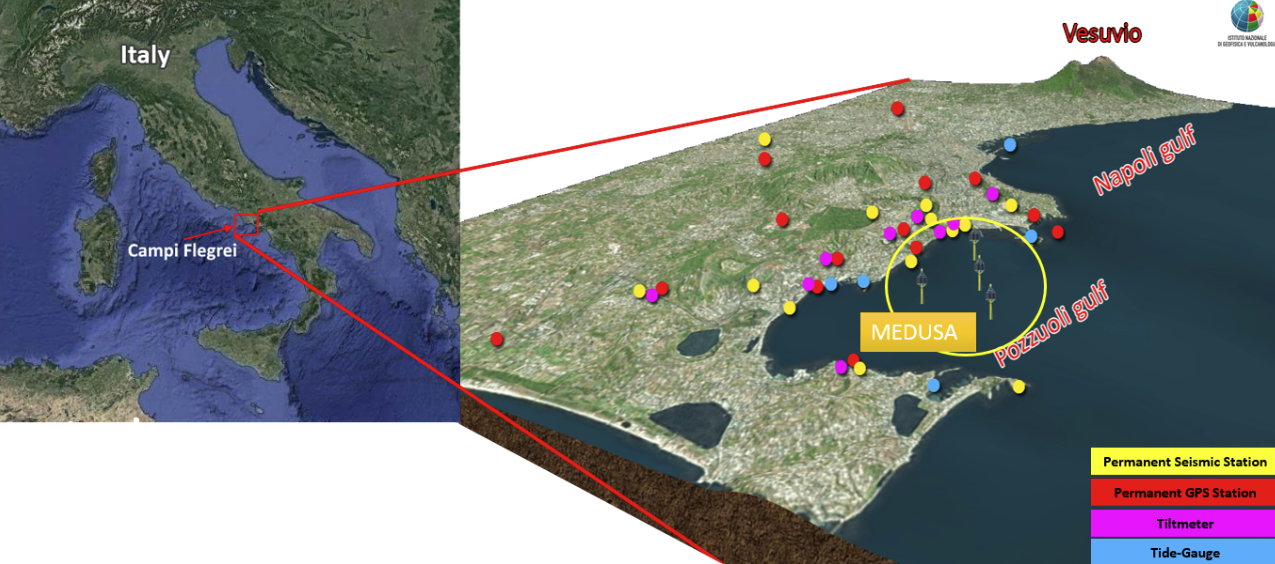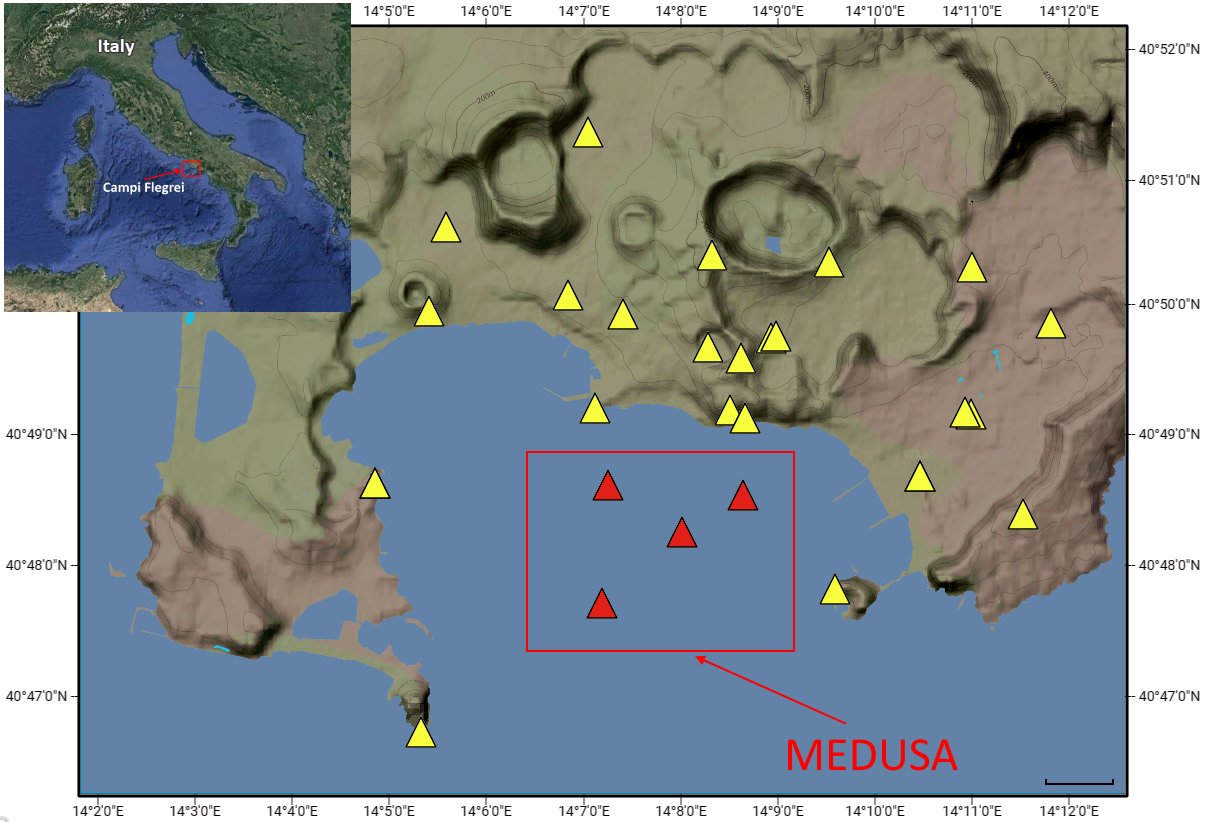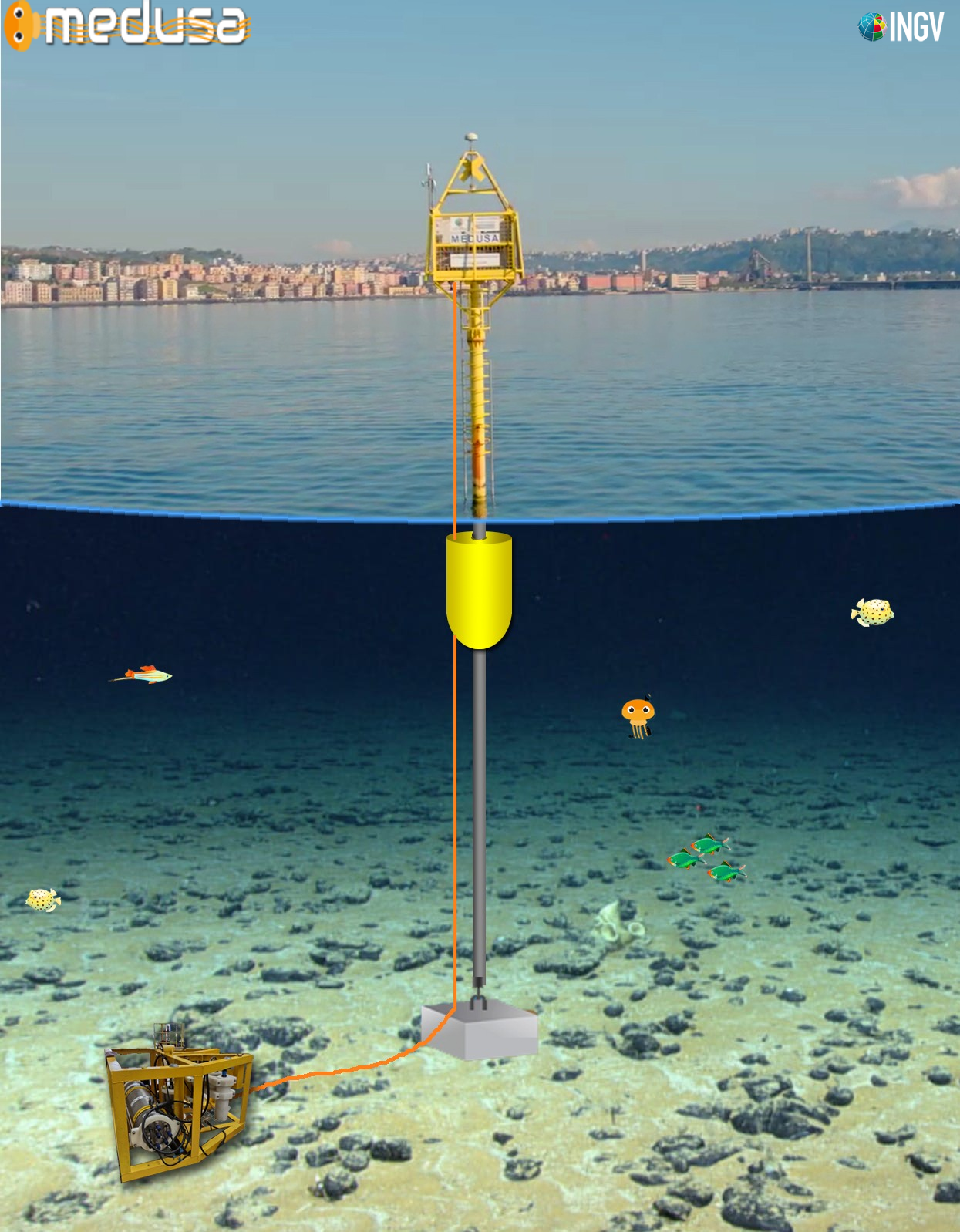
MEDUSA is fully integrated in the Campi Flegrei surveillance system. All data acquired converge to the Osservatorio Vesuviano Monitoring Center,
where they are elaborated and stored together with the data provided by the other land monitoring networks.

MEDUSA
MEDUSA (Multiparametric Elastic-Beacon Devices and Underwater Sensors Acquisition system) is a marine research and monitoring infrastructure of the volcanic activity in the Campi Flegrei, realized as sea-extension of geophysical instrumentation networks existing on the land.
The infrastructure is composed of four almost identical systems; each system consists of an instrumented geodetic buoy and a cabled seafloor multi-parametric module, positioned on depths varying from 38 to 96 m.
The systems are installed in the Gulf of Pozzuoli at a distance from the coastline that varies from 1 to 2.4km according to a specific geometric configuration.
The infrastructure consists of four buoys and as many submarine cabled modules, at water depth ranging from 38 to 96 meters, equipped with geophysical and oceanographic sensors. The infrastructure has been present operating since 2016 and allows the acquisition and real time transmission of the all data in real time atto the INGV monitoring center in Naples, where they are integrated with those acquired by the on-land networks.
Each MEDUSA of buoys is equipped with a standard geodetic GNSS receiver (Leica GR10 and AR10 radome antenna), a heading (±1°), pitch and roll (±0.1°) monitoring system, the power-supply monitoring device of the overall system (current, voltage and photo-voltaic panel’s power), and, for only- for one of the buoyis, a meteorological station (air pressure and temperature, wind velocity and direction), an IP web-enabled camera, and a pulsed K-band radar tide-gauge.
Each seafloor modules is equipped with a Bottom Pressure Recorder (Paroscientific, 8CDP-130I), low-frequency and broad-band hydrophones, a tri-axial broad-band (120s ÷ 25Hz) Ocean Bottom Seismometer with auto-leveling system, a tri-axial Micro Electro-Mechanical Systems accelerometer (DC ÷ 100Hz), clock synchronization (1PPS and NMEA) with absolute GPS time reference on RS-422 interface, a compass sensor, the power-supply monitoring system (current, voltage, water detector and on-off power control), and, for only-one of this, a 3-D current-meter with water temperature sensor . Recently, a seafloor borehole precision tiltmeter (LILY, Jewell Instruments) has been installed to extend the land tiltmeter network to the Gulf of Pozzuoli the on land tiltmeter network.

MEDUSA acquires more than 150 channels with sampling frequency ranging from one second to 200Hz. All data is transmitted in real-time, with a 5GHz Wi-Fi and LTE transmission system, to the operations room of the Vesuvius Observatory in Naples where they are stored and analyzed;
All all the data are made available through a dedicated website that allows users to view and download information.
Copyright © INGV - Osservatorio Vesuviano - LAboratorio Sviluppo Sistemi subacquei (LASS)
